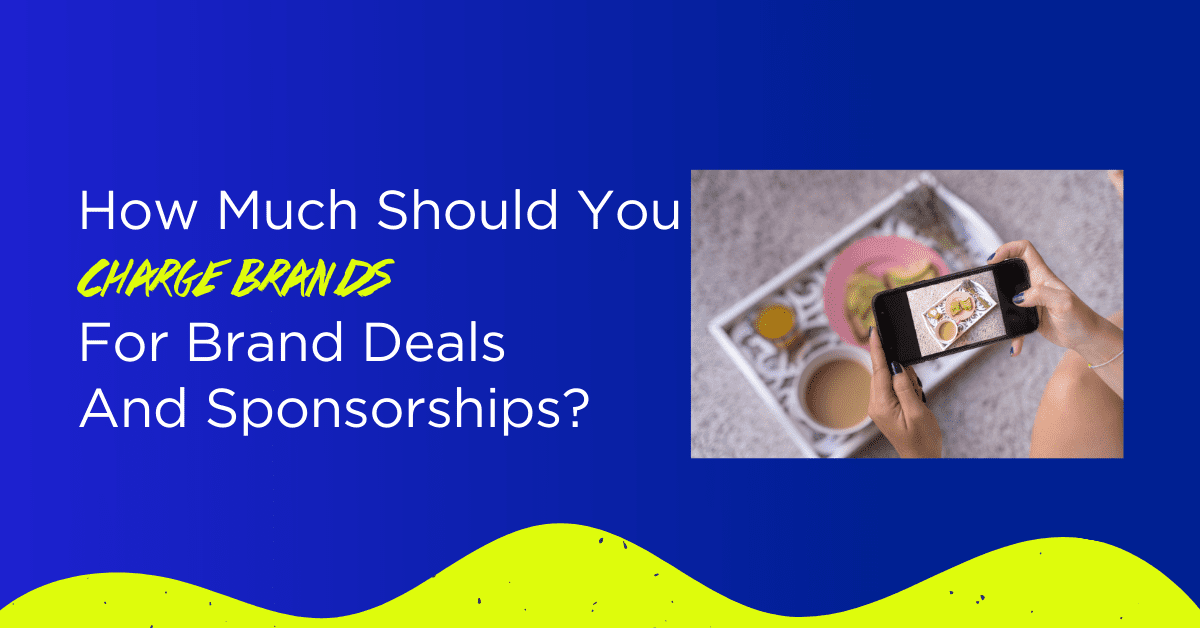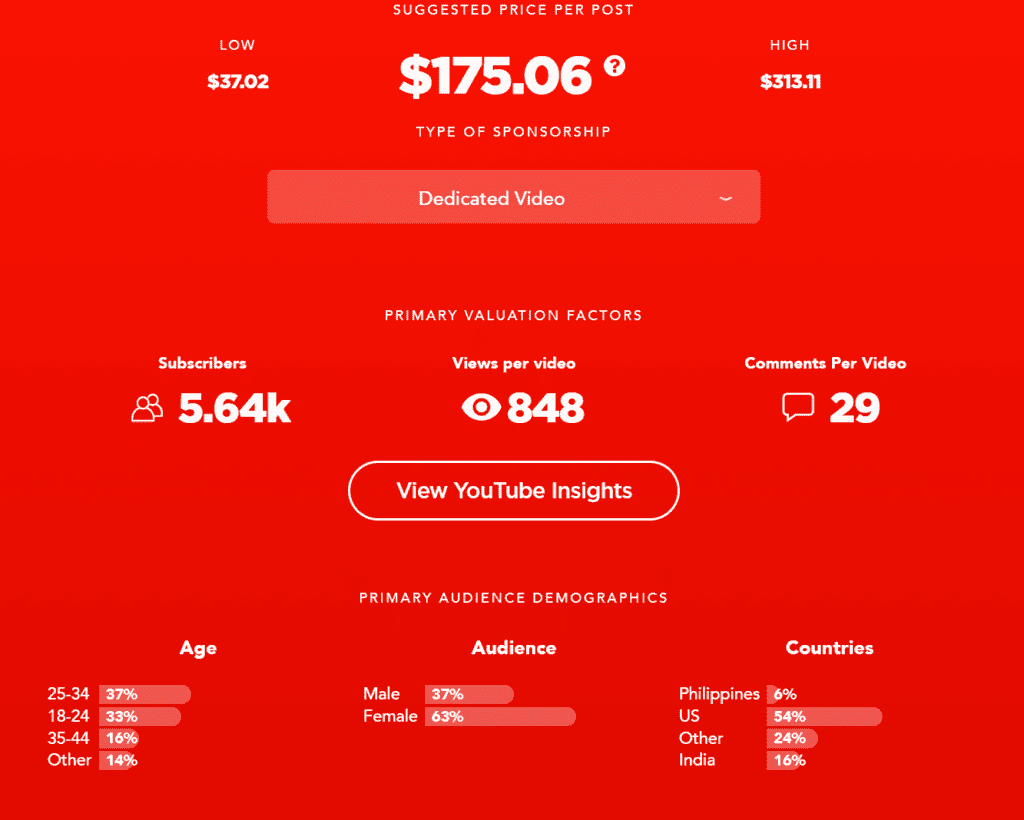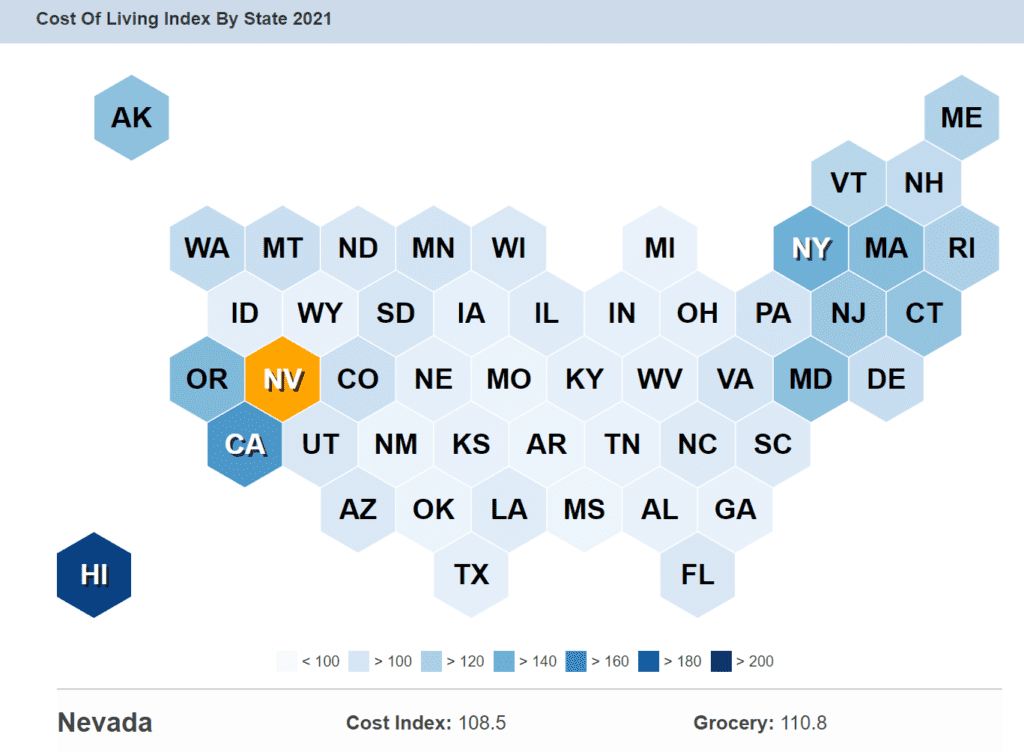
Knowing how much you should charge brands for brand deals and sponsorships can be hard for a few reasons, but the biggest one is due to the lack of transparency around how to calculate your worth.
There is no Glassdoor websites for content creators to give you an insider look at what other creators like you are making.
This is mainly due to the fact that the amount of money a creator makes can vary due to all of the variables get factored into pricing.
Also, some creators are just better at pitching themselves and negotiating more money than others.
This is one of the reasons transparency isn’t there. Brands don’t really want creators talking to one another sharing their income because it will become obvious that brands pay some influencers and creators more, even if that creator has a smaller following size.
But the good news is there are things you can do to help you understand your worth as a content creator and be able to charge brands for your next brand deal or sponsored post.
Research Your Industry
If you have not done so already, joining niche Facebook groups or networking with other creators in your space is a great place to research and get a sense of what the industry standards are for paying creators and influencers.
You can spark a conversation in a Facebook group asking for a ballpark of how much each person charges for a brand deal, how many followers they have and what their engagement rate is.
Or you can ask them what their biggest brand sponsorship payment was and how many followers they have along with their engagement rate.
Make sure when asking, you are honest about why you are asking, as some people may be hesitant to answer otherwise.
An example post may look like this:
“Hey creators, I am new to working with brands and I wanted to start a conversation around transparency. If you are more experienced, I would love to know how much you charge brands for a sponsored post, what your follower size is, and your engagement rate. Hopefully, this post can help anyone else who is new to making money from their social media content.”
This will allow you to get a better idea of how others are charging and where you fit on the spectrum depending on your follower count and engagement metrics.
Calculating Your Worth
Of course, when asking other creators about their income, you may still feel confused as two creators with the same follower count and engagement rate may still make different amounts.
Again, this is normal and has a lot to do with the creator’s ability to convert content into sales, the cost of living in the creator’s area, and one creator just being more successful at asking for more money and getting it.

You can also use Social Bluebook’s Valuation tool to automatically calculate your social media platform’s value based on engagement metrics brands use to negotiate sponsored posts and brand deals.
The valuation tool also takes into account industry standards around what other creators are getting paid to make their valuation tool more accurate.
Now, the valuation tool is just a starting point and does not take things like production time, expenses, or cost of labor into account.
For example, if you have to rent a space to film some of the footage, then this needs to go into the pitching price.
You also want to think about the time and effort that goes into planning, filming, and editing a sponsored post or brand deal video.
Now, I have worked with a number of different brands over the past 3 years and I find the following formula works best for me.
Brand Deal Formula
First, get your engagement value using the Social Bluebook Valuation Tool.
Then, set a production rate based on the industry average for videographers for things like YouTube videos, and other video content; or the industry average for photographers for photo content such as Instagram post.
This is usually shown as an hourly wage, so you can take that number and multiply it by the number of hours it will take you to complete the project.
Then you add your base production rate to your Social Bluebook value to get the amount you will charge a brand.
For example, a videographer’s average hourly wage in California is $41 and it typically takes me 4 hours to plan, film, edit, and upload a 1-minute video integration.
So, my base rate for a sponsored post with a 1-minute video integration is $164 which is then added to my Social Bluebook value of $148 which means I will charge a brand $312 (although I typically round to the nearest whole number which would be $300.)

You can also use my production price examples above and change them to reflect your industry standards based on the cost of living in your area.
You can see what your cost of living index is using the World Population Review website.
Then you will divide your index number, by my index number which is California. If you also live in California, you can just use the above numbers.

So if you live in Nevada, you will take your cost index number of 108.5 and divide it by California’s cost index number of 151.7 which gives you 0.71.
Next, you will take the difference and multiple it by my production cost numbers.
So, if you live in Nevada, and want to make a 3-5 minute dedicated video for a brand, you will take my rate of $246 and multiply it by 0.71 which gives you your rate of $174.66.
You will then take your $174.66 and add it to the value that Social Bluebook gives you using their Valuation Tool.
If you don’t have the Valuation Tool, make sure to CLICK HERE and see what your social media platform’s values are today!
Before You Go
If you are new to charging brands, these numbers may intimidate you, but I promise you, the more you pitch to brands the less scary it gets. You’ll be surprised how many brands will pay you the amount you are worth.
But, if you are finding it hard to land brand deals with the prices you initially pitch, then lower your prices until you get more experience under your belt and gradually increase them over time.
If you find the brand accepts the price you pitched easily without negotiation, then think about increasing your price as brands see the value you add to their business.
Let us know in the comments how pitching to brands is going for you!
